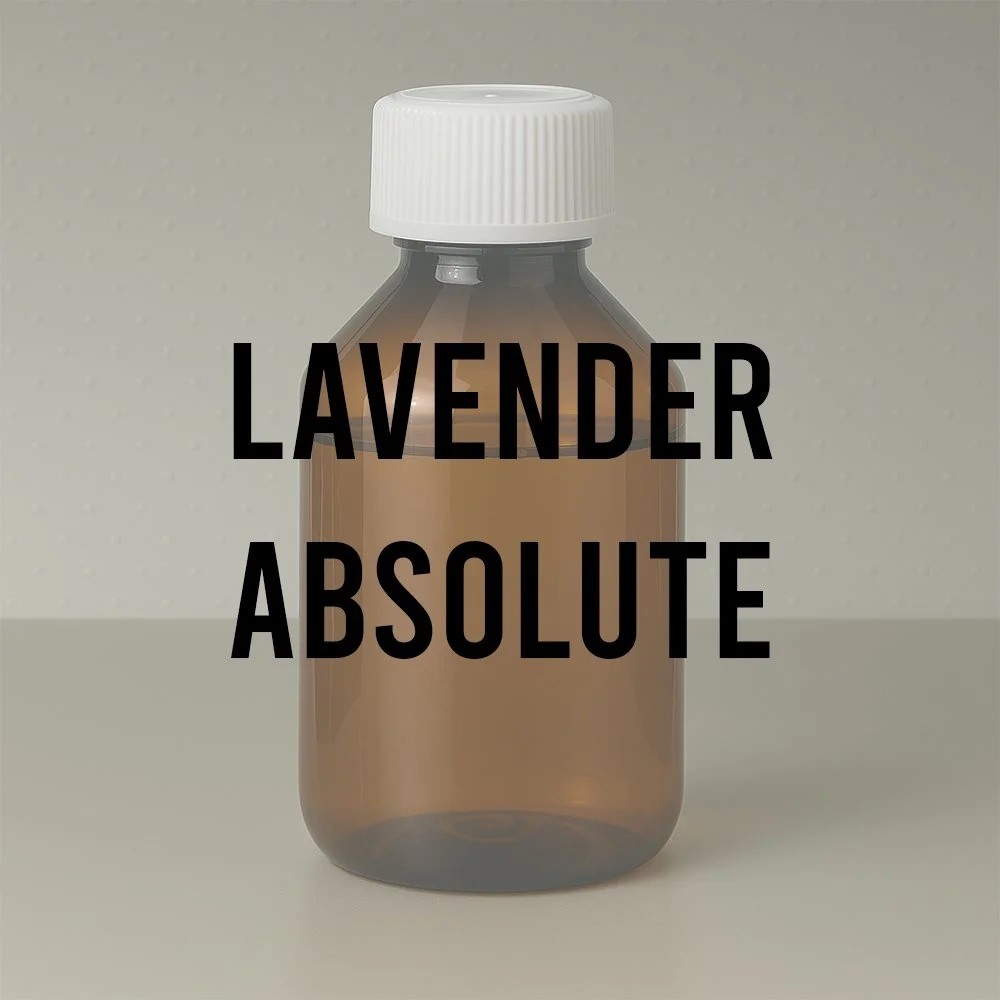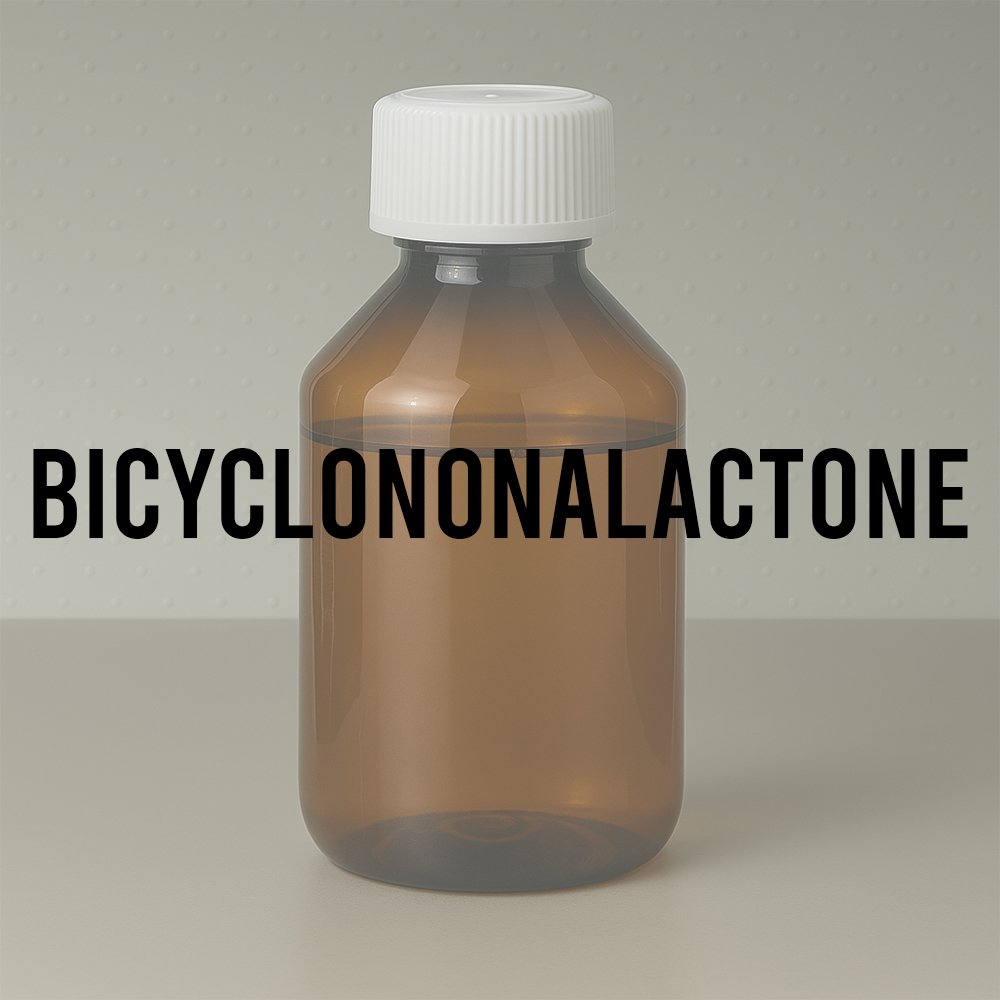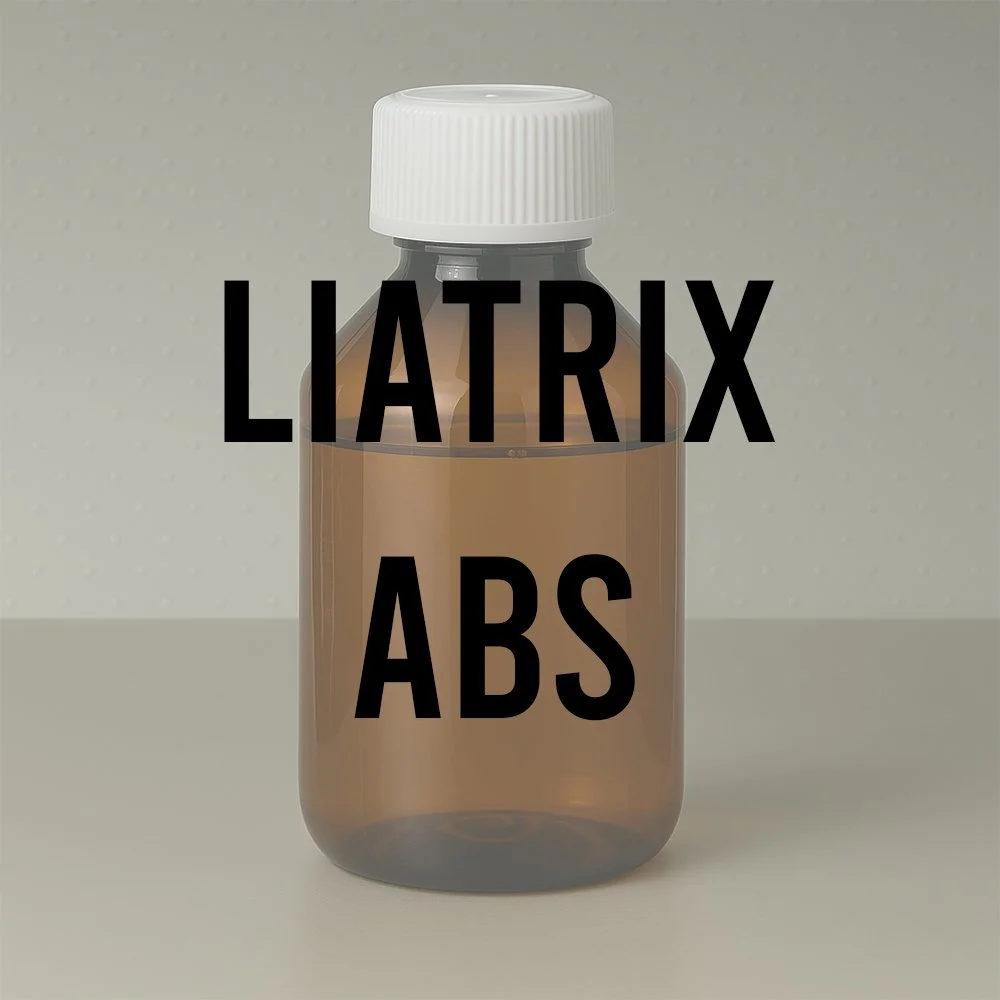Lavender Absolute - Technical Ingredient Overview
🏭 Manufacturer — IFF
🔎 Chemical Name — Lavandula angustifolia Mill. absolute
🧪 Synonyms — Lavender absolute, Lavandula officinalis absolute, Lavender abs., Hyperabsolute lavender
📂 CAS Number — 8000-28-0 (primary); 84776-65-8 (specific extract designation); 97722-12-8 (alternative)
📘 FEMA Number — FEMA 2622 (related to lavender oil derivatives)
⚖️ Molecular Weight — Complex natural mixture; not applicable to single compound
📝 Odor Type — Herbal, floral-sweet, coumarin-rich
📈 Odor Strength — Strong to very strong
👃🏼 Odor Profile — Rich, sweet-herbaceous with pronounced floral character; woody-herbal undertone with distinctive coumarin-like sweetness; green, fresh opening transitioning to warm, balsamic base notes; less camphorous and more tenacious than lavender essential oil
⚗️ Uses — Fine fragrance composition (fougère, chypre, new-mown hay, amber, herbaceous-floral types); natural fixative; flavor applications (limited); cosmetic formulations; aromatherapy applications
🧴 Appearance — Dark green to olive-green viscous liquid; sometimes decolorized to lighter hues using activated charcoal filtration; color intensity varies by production method and source
What is Lavender Absolute?
Lavender absolute is a concentrated aromatic extract obtained from the flowering tops of true lavender (Lavandula angustifolia Mill., syn. Lavandula officinalis Chaix), a member of the Lamiaceae family (Arctander, 1960). The absolute represents one of the most valuable natural perfumery materials, distinguished from lavender essential oil by its richer, more complex olfactory profile and significantly enhanced tenacity.
The material is produced through a two-stage solvent extraction process: initially, fresh or partially dried lavender flowers are extracted with a hydrocarbon solvent (typically hexane or petroleum ether) to produce lavender concrete; subsequently, the concrete undergoes alcohol extraction, chilling, filtration, and careful evaporation to yield the absolute (Arctander, 1960). This extraction method captures both volatile and semi-volatile aromatic compounds that are either lost or altered during steam distillation, including precious coumarins and non-volatile fixative components.
Chemically, lavender absolute is a complex natural mixture containing over 111 identified compounds. The composition is dominated by oxygenated monoterpenes (52.83–80.55%), with linalool (20.74–38.24%) and linalyl acetate (26.58–37.39%) as primary constituents, followed by sesquiterpenes (7.80–15.21%), coumarins (1.79–14.73%), and various aliphatic compounds (Nedeltcheva-Antonova et al., 2022). The presence of coumarins, umbelliferone derivatives, and high-molecular-weight components distinguishes the absolute from the essential oil and contributes to its characteristic sweetness and fixative properties.
Historical Background
The use of lavender in perfumery extends to ancient Roman civilization, where the plant derived its name from the Latin lavare (to wash), reflecting its traditional use in bathing preparations (Arctander, 1960). However, the specific practice of producing lavender absolute through solvent extraction is a more modern development in perfumery technology.
Solvent extraction techniques for botanical materials gained prominence in the late 19th and early 20th centuries with the industrial production of volatile solvents and the refinement of extraction apparatus. The method allowed perfumers to capture a more complete aromatic profile of delicate flowers and herbs that could not withstand the high temperatures of steam distillation. Lavender absolute production became particularly significant in the Provence region of France, specifically in Haute Provence, where true population lavender (Lavandula angustifolia) grows at elevations between 600–1500 meters.
French production traditionally utilized population lavender—plants grown from seeds of wild lavender with natural genetic variation—which yielded the highest quality absolutes with complex olfactory profiles (Arctander, 1960). Following a decline in production between the 1960s and 2000s, lavender absolute manufacturing experienced resurgence, with Bulgarian production emerging as a significant source, now producing approximately twice the volume of French production. Contemporary producers employ the "green ground process" (ensilage), extracting freshly cut plants immediately after harvest to preserve the greener, cooler aromatic characteristics.
The development of clonal lavender varieties (Maillette, Matherone, Diva) through vegetative propagation offered higher yields and cultivation flexibility but generally produced materials of less complex olfactory character compared to population lavender (Arctander, 1960).
Olfactory Profile
Scent Family
Herbal-aromatic with floral-sweet undertones; classified within the fougère accord family
Main Descriptors
Lavender absolute presents a multi-layered olfactory structure distinctly different from lavender essential oil:
Top notes: Fresh, green, herbaceous with reduced camphoraceous character compared to essential oil
Heart notes: Rich floral sweetness; pronounced coumarin-like tonality; hay-like, slightly honeyed character
Base notes: Woody-herbal depth; warm, balsamic undertone; tobacco-like nuances in some varieties
The material captures the authentic scent of fresh lavender flowers more accurately than essential oil, exhibiting a sweet-herbaceous quality that closely resembles lying in a field of flowering lavender (Arctander, 1960). The absolute is notably sweeter and less astringent than the essential oil, lacking the medicinal camphor burn characteristic of many distilled lavender products.
Intensity
Strong to very strong; highly diffusive with excellent projection. The material maintains presence throughout fragrance development, from initial application through extended dry-down phases.
Tenacity
Exceptional longevity—one of the most tenacious natural lavender forms. The absolute exhibits great fixative power, with perceptible aromatic presence extending well beyond 24 hours on skin application. This enhanced tenacity results from non-volatile components including coumarins (particularly coumarin and 7-methoxycoumarin), umbelliferone ethers, higher molecular weight esters, fatty acids, and waxes captured through solvent extraction (Nedeltcheva-Antonova et al., 2022).
Volatility
Middle to base note character; substantially lower volatility than lavender essential oil due to the presence of heavier molecular compounds. The absolute contains fewer monoterpene hydrocarbons (which constitute volatile top notes) and higher proportions of oxygenated compounds and coumarins that evaporate more slowly.
Fixative Role
Lavender absolute functions as a natural fixative in fragrance compositions, contributing both aromatic character and enhanced tenacity to formulas. While it cannot exert true physical fixation at typical usage concentrations (often less than 1% in finished perfumes), the material demonstrates extraordinary ability to round off compositions, add naturalness, and extend the perceptible life of more volatile components (Arctander, 1960). The fixative effect derives from both the material's intrinsic low volatility and its aromatic synergy with other ingredients, creating a harmonious bouquet effect that appears more persistent than individual components.
Applications in Fine Fragrance
Lavender absolute serves as an essential natural ingredient in classical and contemporary perfumery, particularly valued for compositions requiring authentic herbal-floral character with substantial longevity.
Primary applications include fougère fragrances (where it provides the characteristic lavender heart), chypre compositions, new-mown hay accords, forest and woodland notes, masculine colognes and after-shaves, herbaceous-floral fragrances, and amber-oriental types requiring green-herbal facets (Arctander, 1960).
The absolute exhibits excellent blending characteristics with oakmoss absolute (contributing to fougère structures), vetiver (enhancing woody-earthy depth), patchouli (creating rich, dark herbaceous effects), labdanum and cistus (for amber-balsamic nuances), citrus oils particularly bergamot and lime (freshness and lift), coumarin and tonka bean (reinforcing natural coumarin notes), geranium essential oil (floral-green synergy), sage clary (herbaceous complexity), and various nitromusks and synthetic musks (fixation and radiance) (Arctander, 1960).
Unlike lavender essential oil, which tends toward clean, medicinal, and aromatic-fresh effects, the absolute brings deeper sweetness, hay-like character, and more realistic representation of the living flower. The two materials complement each other effectively when used in combination, with the essential oil providing brightness and lift while the absolute contributes body, sweetness, and fixation. The absolute proves particularly valuable for creating natural effects in lavender-forward compositions and for adding a straw-like, dried grass facet to herbaceous and fougère structures.
Performance in Formula
In perfume formulations, lavender absolute demonstrates complex behavior influenced by its rich chemical composition. The material's high content of linalool and linalyl acetate provides immediate aromatic impact, while coumarins and heavier components ensure sustained presence throughout wear.
Stability considerations include potential ester hydrolysis (linalyl acetate and other esters may form corresponding acids during stability testing) and terpene oxidation (monoterpenes can polymerize when oxidized, potentially affecting color and odor). The dark green color, derived from chlorophyll and related compounds, may present challenges in certain applications, though decolorized versions are commercially available.
Solubility behavior varies by alcohol concentration—the absolute shows poor solubility in lower-concentration alcohols but dissolves readily in perfume-grade ethanol and most aromatic materials. Wax content (myristic acid, palmitic acid, and related compounds) may cause some cloudiness in highly diluted alcoholic solutions but acts beneficially as a fixative in oil-based perfumes and soap bases.
The material's pronounced coumarin character allows it to reinforce hay-like, tobacco, and tonka bean notes in compositions. When combined with lavender essential oil, formulations achieve both the fresh brightness of distilled material and the rich, sweet depth of the absolute.
Industrial & Technical Uses
Beyond fine fragrance, lavender absolute finds application in flavor compositions, though to a significantly lesser extent than in perfumery. In flavoring work, it contributes herbal, slightly floral notes with carminative properties.
The material is utilized in cosmetic formulations for its aromatic properties and perceived therapeutic benefits, including applications in personal care products, aromatherapy preparations, and natural cosmetics. However, regulatory considerations regarding allergen content (discussed below) increasingly influence formulation practices.
Industrial applications remain limited compared to lavender essential oil, which is preferred for most functional uses due to its lower cost, lighter color, and simpler regulatory profile.
Regulatory & Safety Overview
IFRA Status
Lavender absolute is not specifically restricted under IFRA Amendment 51 (published June 30, 2023). However, formulators must account for individual allergenic components present in the absolute that are subject to IFRA restrictions, including linalool, linalyl acetate, coumarin, geraniol, and limonene. Each component must be quantified and evaluated against category-specific maximum concentrations established in the IFRA Standards. The 51st Amendment introduced 48 new restricted ingredients and modified restrictions for 11 existing materials, expanding the quantitative risk assessment framework that applies to natural complex substances like lavender absolute (IFRA, 2023).
EU Cosmetics Regulation
Under EU Regulation 1223/2009, lavender absolute is subject to allergen labeling requirements. Following the implementation of Commission Regulation (EU) 2023/1545 (effective July 27, 2023), lavender absolute and its derivatives have been added to the expanded allergen list in Annex III. The regulation now requires individual labeling of 80 allergenic fragrance ingredients when present above 0.001% in leave-on products or 0.01% in rinse-off products.
Specifically, "Lavender, Lavandula angustifolia, ext." must be individually declared on cosmetic product labels in addition to the general term "parfum" or "aroma" when threshold concentrations are exceeded. This classification derives from the Scientific Committee on Consumer Safety (SCCS) opinion SCCS/1459/11, which identified lavender absolute as capable of causing contact sensitization in humans (European Commission, 2023). Transition periods allow products placed on the EU market before July 31, 2026 to maintain previous labeling, with full compliance required for all products by July 31, 2028.
FEMA Status
While lavender essential oil holds FEMA GRAS status (FEMA 2622), lavender absolute's flavor use remains limited and is evaluated on a case-by-case basis under FEMA guidelines. The material is generally considered safe for use in flavoring applications at appropriate concentrations, though perfumery represents its primary commercial application.
Toxicology
Research indicates lavender absolute contains linalool and linalyl acetate that can autoxidize upon air exposure, forming hydroperoxides with sensitizing potential (Hagvall & Bråred Christensson, 2015). Studies on oxidized lavender oil demonstrate that approximately 2.8% of dermatology patients tested positive for contact allergy to oxidized lavender oil, with 56% of positive reactors sensitized to oxidized linalool and/or oxidized linalyl acetate (Hagvall & Bråred Christensson, 2015). Fresh, properly stored lavender absolute presents lower sensitization risk than aged or oxidized material.
Standard toxicological testing shows acute oral LD₅₀ values in rats exceeding 5 g/kg, and acute dermal LD₅₀ values in rabbits exceeding 5 g/kg, indicating low acute toxicity (ChemIDplus, 2023). The material is generally considered non-irritating and non-phototoxic when used at appropriate concentrations in finished products, though individual sensitivity varies.
References
Arctander, S. (1960). Perfume and flavor materials of natural origin. Elizabeth, NJ: Published by the author.
European Commission. (2023). Commission Regulation (EU) 2023/1545 of 26 July 2023 amending Regulation (EC) No 1223/2009 of the European Parliament and of the Council as regards labelling of fragrance allergens in cosmetic products. Official Journal of the European Union, L 188/34-L 188/137.
Hagvall, L., & Bråred Christensson, J. (2015). Patch-testing with main sensitizers does not detect all cases of contact allergy to oxidized lavender oil. Acta Dermato-Venereologica, 96(5), 679-683. https://doi.org/10.2340/00015555-2319
International Fragrance Association (IFRA). (2023). 51st Amendment to the IFRA Standards. Geneva, Switzerland. Retrieved from https://ifrafragrance.org/standards-library
Nedeltcheva-Antonova, D., Gechovska, K., Bozhanov, S., & Antonov, L. (2022). Exploring the chemical composition of Bulgarian lavender absolute (Lavandula angustifolia Mill.) by GC/MS and GC-FID. Plants, 11(22), 3150. https://doi.org/10.3390/plants11223150
National Library of Medicine. (2023). ChemIDplus Advanced: Lavender oil [8000-28-0]. National Institutes of Health. Retrieved from https://chem.nlm.nih.gov/chemidplus/rn/8000-28-0
Photo from Unplash.com










